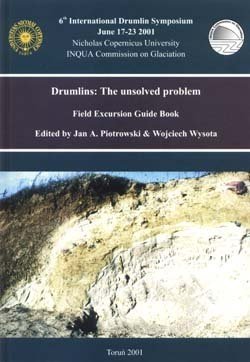Foreword
Drumlins have fascinated researchers for over 130 years. Be it the elegant, streamlined form, the regular appearance of a drumlin field or the complexity of internal structures, these features are possibly the most attractive landforms created by glacier ice. And still very poorly understood!
There is a wealth of literature devoted to both geology and morphology of drumlins, and also to their importance in interpreting subglacial processes. Clearly, these features indicate ice movement over soft substratum, but their specific genesis is contentious. Despite concentrated research and all the progress in understanding subglacial environments achieved in the last 20 years, there is a profound disagreement regarding the fundamental question of just how and why drumlins formed. Theories range from soft sediment deformation to meltwater activity, and include elements of both glacier erosion and deposition. As long as the problem of drumlin formation remains unsolved, our knowledge of ice movement and sediment transport over vast areas of Europe and North America in the Pleistocene will be fragmentary.
This meeting is continuation of drumlin symposia initiated in 1985 by John Menzies and Jim Rose. The previous five symposia were held in different geographical settings on two continents and contributed to progress in glacial geology, even though possibly more questions have been risen than answers provided. Our intention this time is to present the geology and geomorphology of some drumlin fields in Poland focussing on their structural complexity, and to discuss possible modes of formation in the context of other associated land-forms and sediments. Field sites will demonstrate some exceptional characteristics of drumlins not found elsewhere, which may shed more light at the drumlin origin in general. We will see drumlins winding along channel bottoms, drumlins occupying narrow terraces, curve-shaped drumlins, drumlins composed of multiple till beds, drumlins including sorted-sediment cores and consisting of massive till. Furthermore, there will also be sites related to other glacial geology and Quaternary stratigraphy topics of central and northern Poland to give a better understanding of the past environments in which the drumlins have been formed.
The drumlin problem will likely remain unsolved also after this symposium, but the organisers hope to provide new data, important for more general conclusions regarding the subglacial processes.






